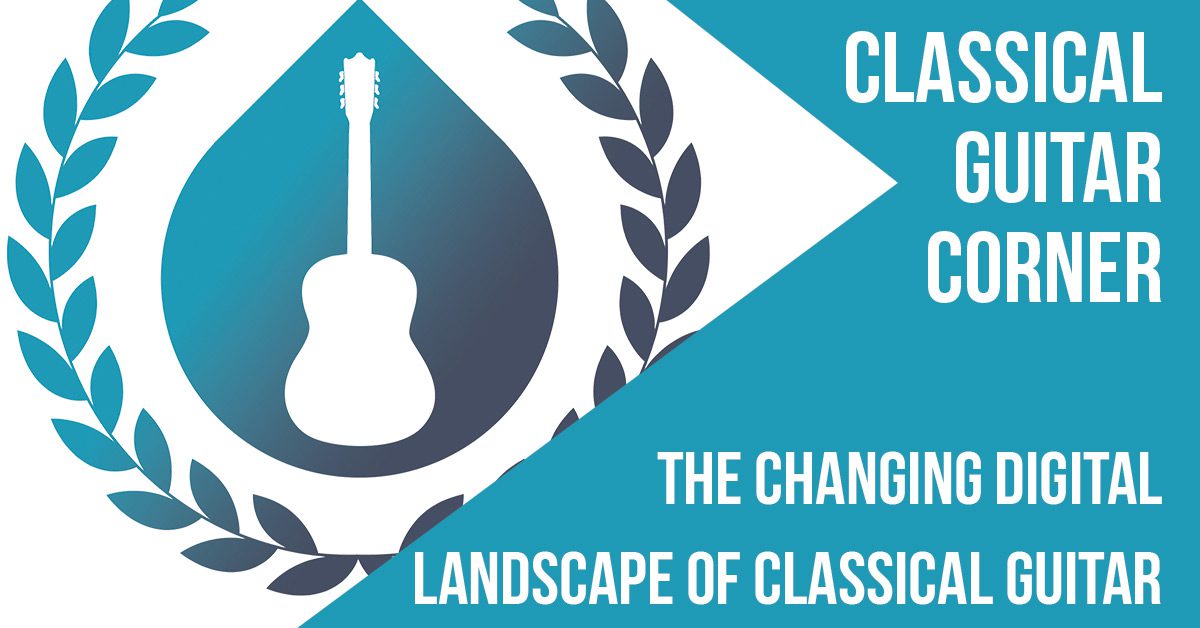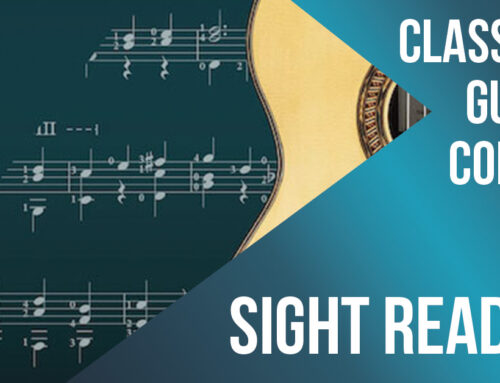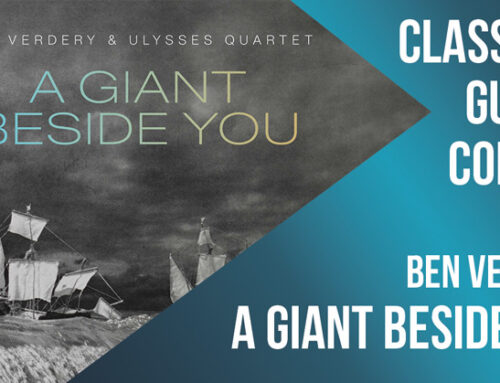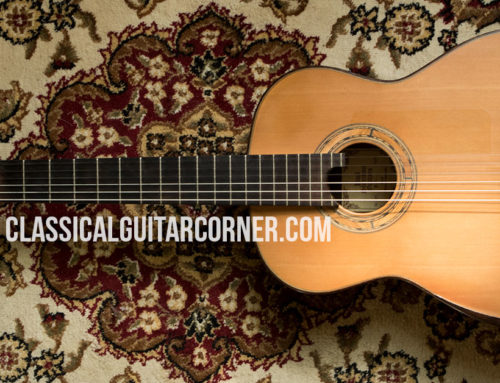Podcast: Play in new window | Download
Subscribe: Apple Podcasts | RSS
If there is one constant in life, it is change. In the past 18 months with the appearance of Covid 19 we have seen an inflection point in the classical guitar world that may have altered how our musical ecosystem functions. Our world has gone digital, much more than ever before. In this episode we will dive into some of the changes and question how they might impact musicians around the world.
The big push
In many ways the pandemic was not so much a catalyst for innovation but rather an amplification and acceleration of trends that already existed.
Zoom’s video conferencing software was already used by some musicians before the pandemic, mostly for teaching, but now it is used by almost all musicians for a variety of purposes. The meteoric ascent of Zoom as a company meant that they too accelerated the platform capabilities to better serve users. Not too long after the pandemic started, Zoom collaborated with the Yale School of Music to develop improved audio capabilities which now allow us to hear the tone and nuance of musical instruments in a far superior way than before. This new audio quality enabled classical guitar societies and concert promoters to run meetings and present performances in a way that, while not without pitfalls and shortcomings, was good enough to substitute in person events.
The proliferation of Zoom usage and functionality went hand in hand with the need of many music students and teachers to move their education activities online. While many early adopters of online education had already experienced the virtues of distance learning there was still a large contingent of musicians who had avoided using the digital medium for learning. Irrespective of one mode being better or worse the fact that more people were forced to experience online education meant that it became familiar and the technology was mastered out of necessity.
New skills for the modern musician
There have always been extra-musical skills needed by professional musicians. Communication skills, performative abilities, teaching experience, networking, to name just a few. Now, however, it seems like the modern classical guitarist needs to have a bevy of multimedia production skills to navigate the new musical landscape.
Video performances have now become a necessary part of a musician’s artistic offering. Clearly this has been the case for some time, however, it is very evident that since the pandemic started the production quality has risen remarkably across the board. Musicians have invested in equipment and learned how to use it to great effect.
More than just video recordings, musicians have been learning how to live stream, podcast, produce their own audio recordings, teach online, and engrave their own musical scores. It would seem that in the places of higher education a further emphasis will need to be placed on multimedia production for all students rather than just those with a proclivity for technology.
From local to global
One of the immediate pandemic responses from concert presenters and classical guitar societies was to live stream their concerts that otherwise would have been cancelled outright. For some presenters that I have talked to, the result was surprisingly very good. Concerts attracted viewers from around the world, performances were widely enjoyed, and because of the low overhead and expenses, presenters could actually provide higher artist fees.
The question now will be: what will concert presenters do moving forward? Clearly there is a viable solution in online streaming. So, when we are able to have in-person local events again, will we move forward with a hybrid style of concert? Will this affect in-person attendance and will the organisations who master the streaming side of concerts grow disproportionately to those who remain local?
Furthermore, concerts that are intended only for online streaming can provide opportunities that are not present in a normal concert setting. Ben Verdery and the New York Classical Guitar Society showcased an innovative concert entitled “Peace, Love, and Guitars”. In this ambitious project, which spanned over two different dates, Ben brought in a large array of collaborators from around the world, musicians who would never have been able to gather for a concert at the same time. All the performances were pre-recorded. Some videos had artists playing together in the same location and others were constructed from audio and footage that were created thousands of miles apart. Some videos featured standard camera angles featuring the guitar and the musicians but others incorporated creative and artistic footage that were just as integral to the performance as the music. It was a wonderfully creative project that was hugely successful and represented the fact that there are new paths to follow for performers and presenters alike.
Who owns what?
An interesting question that has come about from classical guitar concerts being presented online is what to do about the performance after it has been watched.
Live streaming a concert in real time can bring a number of challenges. Firstly, the audio and video quality is often not acceptable. In an optimal situation with high end equipment and fast internet connections it can be done. However, the variables present with various artists collaborating from home means that live performances risk internet connection issues and the quality of the audio/visual stream is rarely good enough to satisfy an audience used to in-person events.
This has resulted in a common practice of broadcasting pre-recorded videos that the artist has created themselves. It works to great effect and with some creative presentation ideas the ambience of a special live moment can still be achieved.
Once the event has finished, however, these excellent performances remain. Who owns the rights to the videos? Can they be used again for another concert presenter? Can they be uploaded publicly to YouTube or the artist’s website? These are all interesting questions that do not have standardised answers right now.
Content saturation and the land grab
Creating content for the online space, be it full concert performances or a technique tip, requires a great deal of effort. It can be discouraging, then, when after all your efforts there is little response from the masses. In a content saturated online world it can feel like screaming into a void.
Perhaps you can’t even get to the point of recording performances or online teaching. The technology is prohibitive, the equipment unavailable, or you just don’t care to journey down that path.
This is where we have seen some companies with large audiences offer a solution to these problems by offering exposure and/or content production in return for the artists abilities.
The value proposition of exchanging your time and effort for exposure is not a new one. In the past it may have been a notable concert series, venue, festival, or perhaps a feature in a publication. In a world where it is difficult to get career momentum or even a foot in the door, offering your services for free in return for some possible exposure is a tempting proposition. The problem is that it creates a race to the bottom and perpetuates the idea that musicians should do something out of love or be grateful for an experience they may not have had otherwise. Whatever the case it does not pay the bills.
In the new and developing digital landscape performances remain, videos are replayed, and pre-recorded lessons are taught around the clock. The biggest difference, however, is that recorded content accumulates over time. This has given rise to a sort of “land grab” where different companies have jostled to become the “biggest” and the “best” with the most subscribers or the largest audience.
The exposure given to artists from these platform companies can provide a positive boost and will definitely quell the fear that one might be missing out. By and large, however, these companies are primarily interested in this content for their own advertising purposes.
As musicians perceive opportunities in these growing platforms many have set out to create their own version. Sometimes they can be individual pursuits or in other cases collaborative efforts. Like other examples in the world where companies have grown too large to compete against, the playing field can be challenging for newcomers to get traction. I personally hope to see a proliferation of projects that bring diversity to our classical guitar community in place of a future with a few big platforms that simply replace the gatekeepers of the past.
The cult of personality
It has long been the case that career-minded musicians will play to their strengths. This might be virtuosic playing ability, charismatic stage presence, a good sense of humour, or good looks. Anything that can give you a bit of an edge in a very challenging career path is a welcome boost. The dominance of social media, particularly with the younger generation, is now transforming the scope of what might be an individual’s strength.
The power of social media (which includes YouTube) is that it can forge a perceived relationship between content creator and audience member. More than just personal anecdotes delivered from the concert stage, musicians can now offer an extremely personal view into the minutiae of daily life.
Practice sessions, meals, photos on the road, clothing styles, emotional breakdowns, wine choices, relationship updates, and basically anything that the terms and conditions allow. Each musician will choose where they draw the line with their postings but regular updates of a more personal nature create relationships that form the foundation of an audience.
In the digital world an audience is a powerful resource. It can afford attention from a large group of people for each artistic endeavour. It can create a source of financial income for the artist through platforms like Patreon where avid fans can support their favourite personalities in return for even more personal insights and attention. And, it can translate into more traditional musical rewards like concert engagements and industry recognition.
During the Pandemic the whole social media scene was amplified as other avenues were cut off. Individuals (albeit not too many) were able to accumulate tens of thousands and even hundreds of thousands of subscribers on various platforms. In these extreme cases, artists are newly empowered to garner success from ventures that spun off from their social media following. The individuals vary dramatically but one thing is common between them: they all let their individual personalities shine rather than trying to be someone else. A difficult achievement for anyone let alone classical musicians who come from a somewhat introverted world of solo practice and study.
The social media trap
With exciting examples of social media success one can feel compelled to join the fray. In fact, scrolling through the endless curated feed of others’ successes can downright make you feel like you are missing out on something. This is where you might fall into the social media trap. One that leaves you feeling exhausted, overwhelmed and underachieving.
Something that I feel is not considered often enough is that social media platforms are there to generate advertising dollars. They are not there to help you or your career. Rather they have engineered an incredibly powerful balance between reward and obscurity. Just enough organic reach to get you some attention but not enough to make much of an impact. No, to make that impact you will likely have to spend advertising dollars.
Yes, it is possible to invest your time and effort into one of these social media platforms and generate a following that can further your musical endeavours. To do this requires a highly consistent output of effort, content, and interactions. Anything less than this will likely leave you in the frustrating froth of obscurity.
So, while we have seen some rare examples of classical guitarists benefiting from their efforts on social media I think it is important to acknowledge from the outset that these are only viable paths if you are willing to put in a consistent effort. And, like anything else that is challenging, you had better genuinely enjoy the process otherwise it will be very hard work indeed!
The land of opportunity
Amongst all the clutter and confusion and overwhelm of the digital world there are opportunities; Exciting opportunities that empower musicians to bring joy and inspiration into the lives of others.
Change is constant and inevitable and while it might feel like some familiar career building avenues have been cut off it is exciting to think of a new paths that can be carved out by an individual artist. These paths are inventive, creative, and ideally they will spring from a source of passion that inspires both artist and audience. Change doesn’t have to feel like it is being forced upon you, it can be something that you set out to make for yourself and others.





Very cool podcast! It’s definitely interesting to hear how the push to digital formats is affecting the musicians themselves and the new ways a musician can take advantage of the technology. I was curious if there are good ways an amateur musician can branch out and use these platforms?
I really appreciated the tools you gave for navigating the internet: entertainment, edu-tainment, and education. I also think that getting feedback is an integral part of serious study of the instrument. To me, that (and the graded curriculum) makes the academy at Classical Guitar Corner an exceptional program of study.
A clear and helpful outline and explanation, Simon. Thanks for doing this podcast. (I miss the podcasts!) I enjoyed hearing your thoughts on the obvious and most likely ongoing digital paradigm shift that is remarkable to watch unfolding. You gave us all an early boost into this brave new world when you started the CGC(A) site. It’s been remarkable. Those who participate on the site of course get top notch musical education and incredible community support for learning the classical guitar — but the subtext also gives a pretty darn good education on media skills etc. for this interesting phase of our culture. Once again, looking forward to more podcasts! All best, Bruce